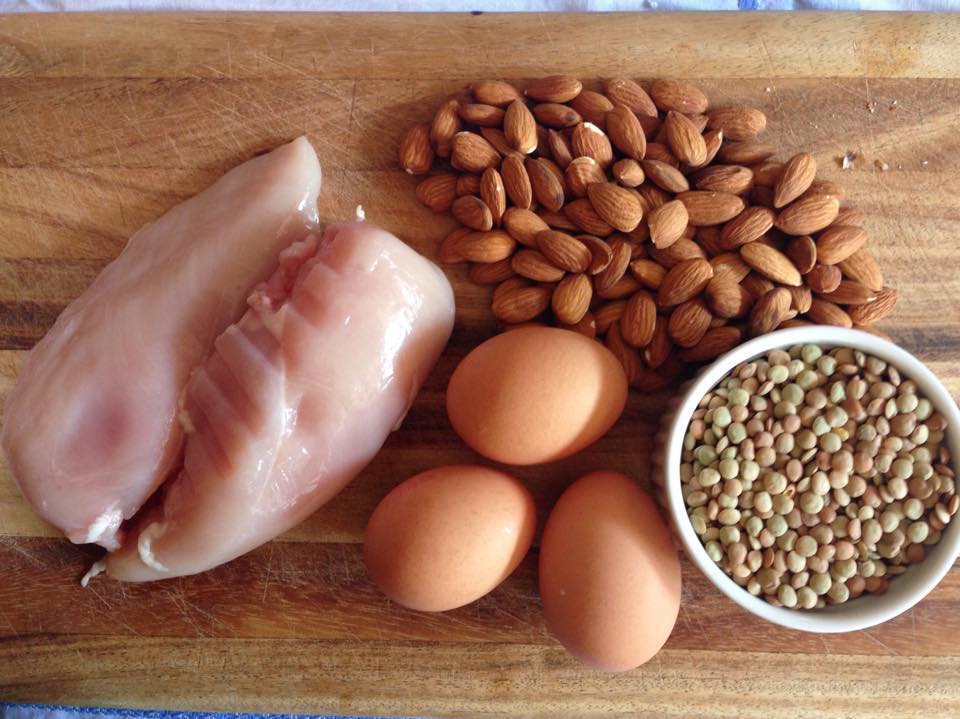By Nathan Chambers, Recent Arizona State University Nutrition Student
It seems to me that everyone’s favorite macronutrient is protein. Everywhere you go you hear people talking about how much protein their diet contains, and high protein diets are thought of as good diets (especially by men).

Protein is an essential element to our diets. Protein is what our body uses to heal damaged tissue, create enzymes, and protein even plays a role in immunity. But the amount of protein actually required for an individual is much less that I think is perceived:
- Typical adult: 0.4-0.6 grams per pound of bodyweight
- Active adult: 0.5-0.6 grams per pound of bodyweight
- Athlete: 0.6-0.9 grams per pound of bodyweight
- Strength athlete: 0.7-0.9 grams per pound of bodyweight
So, for a typical 150-pound adult that is 60 to 90 grams of protein per day, which equates to 240-360 calories per day. Here is an idea of what this person would have to eat:
- 5 Ounces Chicken: 25 grams
- 3 Ounces Salmon: 22 grams
- 3 Ounces Steak: 23 grams
- 2 Eggs: 13 grams
- 1 Cup Black Beans: 13 grams
- 1 Slice Cheddar: 7 grams
- 1 Cup Milk: 8 grams
- 1 Cup Peas: 8 grams
When reading these numbers, keep in mind that the average American consumes 8.7 ounces of meat every day… and that is just meat. That does not include dairy, nuts, beans, etc. And also note that vegetables and fruits do contain protein as well, but in smaller amounts.
If you’d like to find out exactly how much protein is recommended for YOU, please check out this online calculator!
The point I am trying to make is, most people consuming a typical American diet are eating plenty, if not extra protein.
And like all macronutrients– what the body does not use is stored as fat. So why is the supplement industry making so much money off of protein shakes?
There are some groups of individuals who may require more protein:
- Athletes
- Strength athletes
- Children
- Vegetarians/Vegans
- Pregnant mothers
- People starting a new lifting/workout routine
But even these people, in general, shouldn’t need to supplement with a protein shake/bar. And, there are ways to make a protein shake that is much healthier for you than by using a store bought powder.
If you’re one of these groups of people and you’d like some ideas on good, whole food protein shakes check out these recipes. Feel free to swap out ingredients and create your own!
Strawberry Shake
2 cups strawberries, hulled and sliced
1½ cups Greek yogurt
½ medium ripe banana
½ cup milk
2 teaspoons honey, plus more
1 cup crushed ice
As you can see, you can use as few, or as many, ingredients as you like. There really isn’t a wrong way to make protein shakes. Just be sure to include a good base, I like to use kefir or greek yogurt, and some nuts or high protein veggies!
Even strength athletes don’t usually require more than 0.9 grams of protein per pound of bodyweight, so chances are you are getting plenty! Just remember, it doesn’t matter what kind of macronutrient (protein, carbohydrate, fat) you are getting too much of… excess calories get stored as fat!
References
Wall st. cheat sheet: How to make a seriously delicious protein shake (2016). Chatham: Newstex.
http://www.caloriecount.com
U.S. Department of Health and Human Services and U.S. Department of Agriculture. (2010).
Dietary Guidelines for Americans. Retrieved from https://health.gov/dietaryguidelines/2010/

